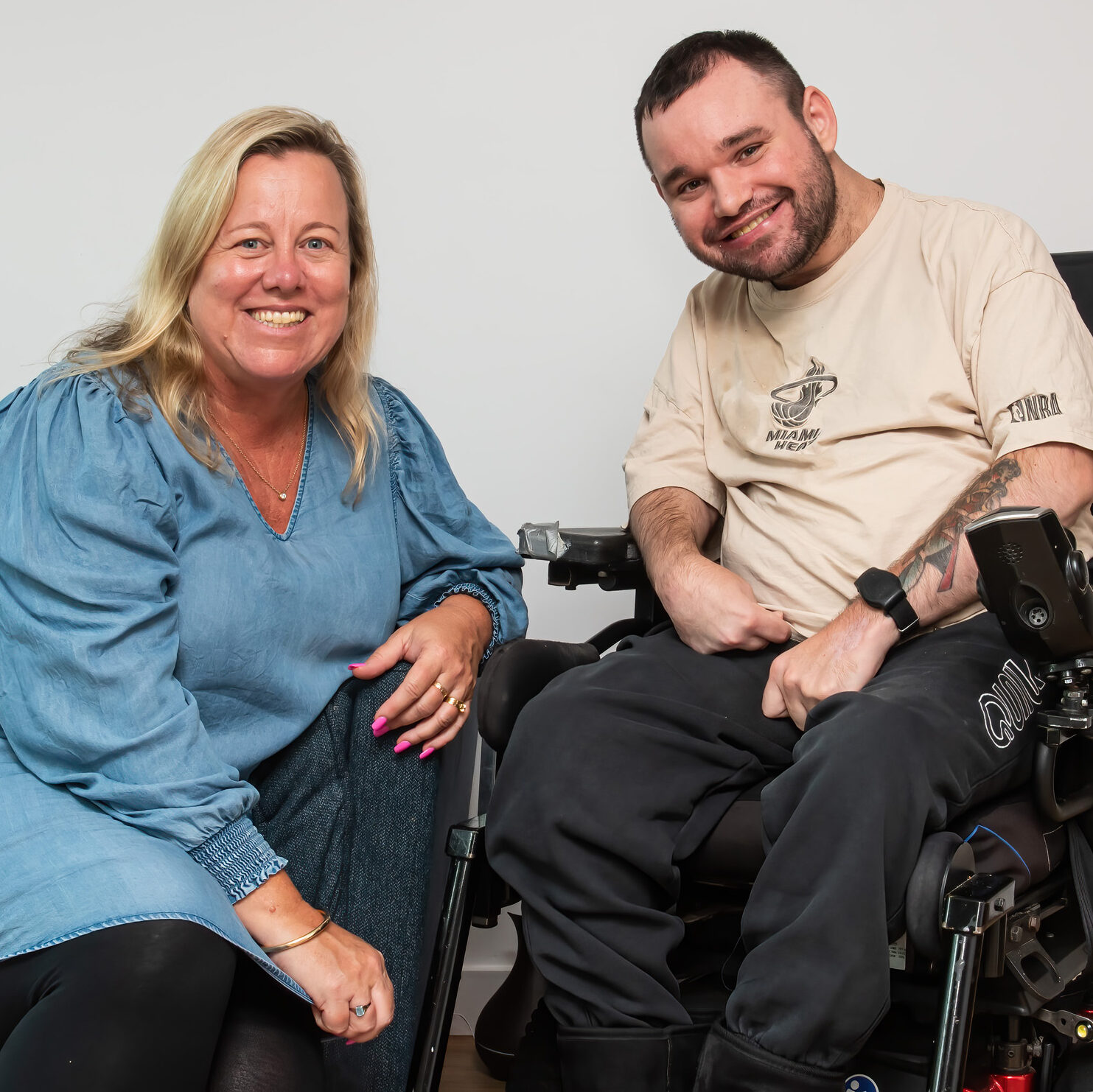Assistive technology (AT) plays a crucial role in the lives of many people with a disability; these technologies support people to perform their daily tasks and routines more efficiently. As a 34 year-old with Cerebral Palsy, I am a long-term user of AT. Throughout the years, I’ve utilised various assistive products, granting me thorough knowledge and experience. I personally use AT in every aspect of my life, from communication and information management, to self-care, domestic activities and work. To give some examples, my iPad allows me to communicate in place of my physical voice, my hoist is used to get me in and out of bed and transfer me safely from A to B and my trackball mouse allows me to use the computer seamlessly.
Over time, I have discovered that AT requirements are based on an individual’s circumstances. There should be no universal solution applied with AT, as disabilities exist on a spectrum and therefore people’s needs and wants also exist on a spectrum. To illustrate, there is a varied range of communication devices available for people with disability to use. These devices operate differently from each other, spanning various functions to meet the individual’s requirements and desires. With that said, some health professionals tend to recommend the same products to each of their clients, without consideration of their clients’ capacity or preferences. It frustrates me to reflect on the thousands of dollars wasted in having assistive products forced onto me that were not suitable or what I was looking for. What I undoubtedly realise now is that I should have been consulted in the decision-making process rather than having the decision made for me. AT selection should always be done through a partnership between the user and the professional/s offering AT advice.
This past year, I was invited to collaborate with the Australian Rehabilitation and Assistive Technology Association – or ARATA – in the creation of a micro credential course called An introduction to the good practice steps of assistive technology provision. ARATA is the national non-profit peak body for AT stakeholders and has members who are AT users, as well as AT advisors, suppliers, developers, researchers and educators. Through this new micro credential course, myself and Libby Callaway — an AT advisor and Occupational Therapist with over 30 years’ experience — have created an accessible way for people to be introduced to good practice steps which can be used in the process of AT selection and provision. This course is targeted towards people who use AT, AT advisors (health professionals and peer mentors), suppliers, developers, educators, researchers, policy makers and funders. The course was launched on the 21st February 2025.
We began designing the course by drawing on guidance from the World Health Organisation’s 5 P people-centred assistive technology model. Additionally, we referenced a literature review on guidelines for assistive technology service by Dr Natasha Layton and colleagues, published last year in the Disability and Rehabilitation: Assistive Technology Journal. Importantly, we had significant input from a project advisory group, comprised of all the stakeholders that ARATA represents including assistive technology users, advisors, suppliers, developers, researchers and educators.
To bring the project to fruition, we teamed up with an e-learning developer — Reality Learning — to capture 360-degree photographic tours of my Melbourne CBD apartment. These photographic tours are coupled with written descriptions of the assistive products and services I use, and provide insights into the practice steps I took (sometimes by myself and sometimes with advice from others like health professionals) to get a good AT outcome.
My goal is to create a greater awareness in the community and to inform others that people living with disability have many options in how they can facilitate their everyday living and that they should be consulted in determining the best means to make this possible. I would love to empower people with disability and help them realise that by doing their own research and finding the right AT, they can discover ways to do many of these things on their own. With the traction gained from this introductory course, our ultimate goal is to create additional courses in the future, which focus on each of the 11 categories of assistive products, and assistive services that may be used, and provide greater detail and information to learners.
Course details
Title: An introduction to the good practice steps of assistive technology provision
Time: Up to 3 hours to complete
Outcomes: Learners will be more knowledgeable about good practice in AT selection and provision. A certificate of successful completion is provided at the end of the course.
Description: Throughout the course, the learner is taken through the 11 product classes outlined in the Australian and New Zealand Standards for Assistive Products Classification. Real life examples of products in each of these classes are provided, with an explanation about how to achieve your desired outcomes in relation to the steps of AT provision. Examples are provided for the living room, kitchen and bathroom and in the visual delivery, are highlighted by white squares and hot spots. Knowledge tests are included at the end of each section.
Accessibility: For low vision learners, a text only version of the course is also provided. This version can also be downloaded by anyone who wishes to refer back to the information post course completion.
Check out the course here! https://www.arata.org.au/education-resources/online-shop/
